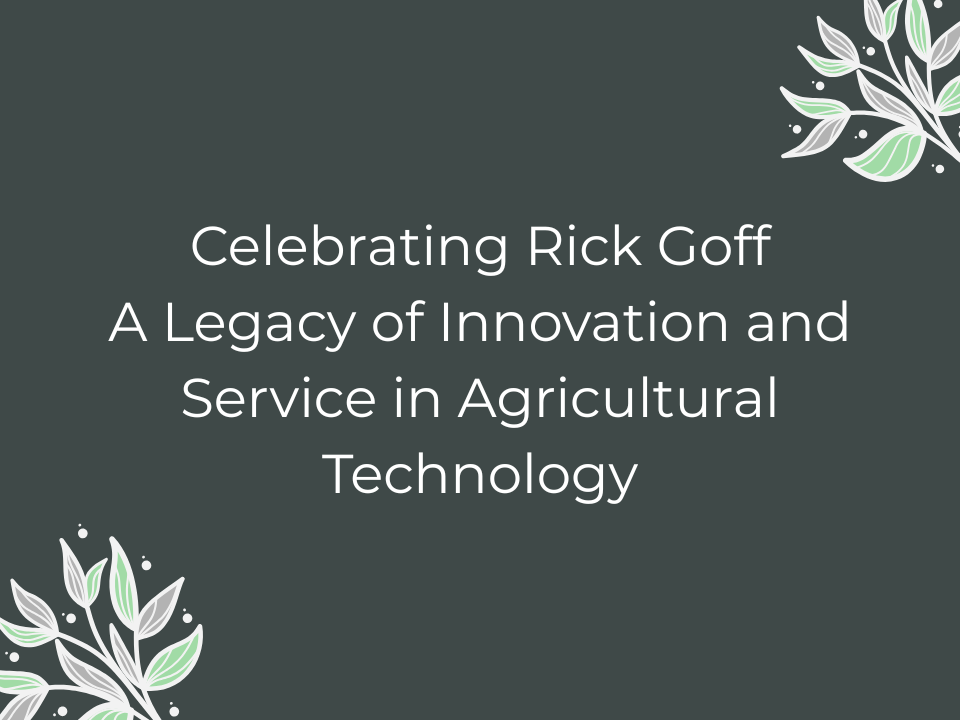
What is a 753 EDI Document? Lowes Required Ready To Ship
June 6, 2023
Strategies & Tactics You Need To Know To Improve Your Forecasting Success
July 11, 2023Erosion. It means something is being taken away by outside forces. Whether its soil in a field or gross margin dollars in your business, erosion causes serious harm.
For growers with employees and many SKUs with lots of different raw materials and different customer types, there are many sources of margin erosion, all of which can silently but significantly impact a grower’s profitability. And many times, the impact of margin erosion isn't clearly seen at the end of the season when little can be done to recover while the real root cause is hard to identify.
It is important that growers understand key sources of margin erosion and adjust their operational and data habits to provide visibility and metrics which can help identify problems before the situation becomes serious.
Here are 5 common areas of margin erosion for growers.
Lack Of Cohesive Plan And Strategy
Confusion about goals, objectives, or direction results in your team leads to relying on their own interpretation or own perspective of what is ‘supposed’ to be done. So, what gets done may not be the desired thing that drives you toward the real goal or objective of the business.
If your employees are going in different directions this will cost you more, and result in plan and revenue misses. Whether it’s caused by not ordering or planting a new crop on time because some of the employees didn’t know about the plan change, or not fulfilling a new customer’s request, these ‘lack of cohesive’ plan or strategy issues waste (or lose) money and opportunities.
Usually in the lack of a clear plan we default to doing the same thing you did last year regardless of results. We all default to the familiar. Doing what you did last year may not be as profitable this year.
Lack Of Pricing Updates

We have been through a few years of unprecedented cost increases in all areas of our operations. As costs increase, prices must also increase prices or you are losing margin.
As we showed in our article on pricing as costs change, a 10% increase in costs yielded a 14.3% margin reduction for the plant under analysis.
Raw material increases come independently but the cumulative effect on your margin can be significant.
For a grower that has 45% of their overall plant costs in raw materials, every 5% increase in raw materials costs that is not passed on in price increases reduces your gross margin by 133 basis points. For a $2M gross revenue grower, that is a loss of almost $27K of gross margin dollars for every 5% raw material increase you do not add to price increases.
Costing analysis and pricing updates should be part of your yearly planning updates to protect against cost-based margin erosion.
Manual Data Processes
Generating key reports, or updating data used to build forecasts, metrics or profitability analysis can be very manual.
Different software systems, different data formats, and the conversions and re-formatting necessary can cause employees to spend a lot of time doing very manual actions just to get data in a condition to tell you some answer you need. And usually those employees are your higher level, higher compensated employees whose real value is doing other tasks in the business.
All the repetitive and manual copying, cutting, pasting, re-formatting and recalculating wastes employee time and introduces sources of potential data and calculation error.
In many cases, with the right tools, those manual data operations can have many steps automated.
Data process automation frees employee time, improves error propagation, and allows employees to focus on the real needs and issues and what the data is really telling them instead of spending so much time and effort putting the data story together.
Scrap/Cull/Dump/Yield Problems
Scrap (or whatever you call it at your operation) is a loss of potential revenue no matter what.
Scrap means that a grower puts money into raw materials and labor and overhead to create a plant that can’t be sold. So, the raw materials and labor dollars you spent for those items that are scrapped or culled are just lost.
Scrap could be due to many reasons such as watering or maintenance issues, diseases, bugs, incorrect availability numbers and many more.
Growers who do not track their scrap/cull % and the reasons for it eliminate a key feedback loop that can help solve those problems over time.
Labor Inefficiencies
Growers largest cost is typically labor. When labor hours are wasted, a grower’s margin is eroded. Inefficient labor has the impact of adding cost dollars to each unit you produce.
For a grower who has 35% of their product costs in labor, a 5% efficiency decrease results in a 3.2% decrease in gross margin - 104 basis points. For our same $2M grower, in some geographical areas a 7% labor efficiency decrease results in needing an additional full-time employee assuming the same unit volume.
The labor costs in your area may be different but the directional result holds. Labor in-efficiencies are corrosive to profits.
How do you know if your labor is performing inefficiently?
You need to measure key labor metrics in your operation and compare those over time. Key labor metrics are units per person-hour or labor $ per unit and similar.
Labor metrics like these help you compare over time the effectiveness of turning labor dollars into sellable/sold units. Usually, we will help clients tie together data from their operational tracking (units produced, picked, etc.) and the associated data from the payroll system. By combining these data sources then key labor metrics can be derived.
Tracking your key labor metrics over time and reviewing them periodically as part of your normal management discussions and meetings help provide awareness of issues and elicit improvements.
Bottom Line on Your Bottom Line
Growers have many sources of margin erosion.
A grower can combat that erosion by some simple steps:
- Take advantage of grower software system capabilities and make sure you are properly recording and using the transactional capabilities for your inventory management. This data will form a portion of the data foundation for further analysis and improvement.
- Add data automation and automated reporting to improve back-office labor efficiency.
- Create and maintain your strategic plan and improve communications with your team to make sure everyone is going in the same direction.
- Use key metrics to track important areas of potential margin erosion and take proactive measures to avoid problems.
- Each year assess your costing and pricing updates to handle inflationary forces in your operations.
- Create and maintain a rolling sales forecast with pricing/costing projections to help you manage a multi-year planning view.
Advanced Grower Solutions has software products and consulting services that can help you create, identify, track and report and automate some of the processes that can help tighten up these sources of potential grower margin erosion.
Contact us for more information.





